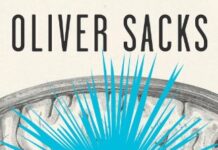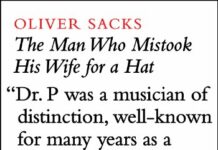
Ebook Info
- Published: 2011
- Number of pages: 431 pages
- Format: PDF
- File Size: 1.80 MB
- Authors: Oliver Sacks
Description
As with his previous bestseller, The Man Who Mistook His Wife for a Hat, in An Anthropologist on Mars Oliver Sacks uses case studies to illustrate the myriad ways in which neurological conditions can affect our sense of self, our experience of the world, and how we relate to those around us. Writing with his trademark blend of scientific rigour and human compassion, he describes patients such as the colour-blind painter or the surgeon with compulsive tics that disappear in the operating theatre; patients for whom disorientation and alienation – but also adaptation – are inescapable facts of life.’An inexhaustible tourist at the farther reaches of the mind, Sacks presents, in sparse, unsentimental prose, the stories of seven of his patients. The result is as rich, vivid and compelling as any collection of short fictional stories’ – Independent on Sunday
User’s Reviews
Reviews from Amazon users which were colected at the time this book was published on the website:
⭐Most see a disability as an impairment of normal function; however, some see a disability as a source of creativity and innovation. Being blind means that one does not exist in the perceptual world of sight; on the contrary, that individual may have a greater presence in the perceptual world of touch, taste, smell, and hearing. Therefore, a conclusion may be drawn that a perceptual world is different for each individual, but that perceptual world contributes to the experience of the individual regardless of its constituents. In a few case studies of paradoxical neurological disorders Oliver Sacks illustrates the perceptual words of those who differ from the norm. Oliver Sacks was a British born neurologist that spent the majority of his professional life in the United States. In addition to being a well-known physician, Sacks was also a naturalist and author who wrote many best-selling books; including, The Man Who Mistook His Wife for a Hat, and An Anthropologist on Mars.A common motif that is explored throughout An Anthropologist on Mars is sight. The multiple sections of An Anthropologist on Mars detail longitudinal case studies, with a majority of them pertains to discrepancies in visual perception; however, all of them pertain to individuals that use their afflictions as a source of creativity. Sight happens to be a very relatable topic of interest to Sacks, since he was documented as having been diagnosed prosopagnosia, or the impairment of facial recognition. As a physician, Oliver Sacks fosters a relationship with the individuals of his case studies that transcends the traditional doctor and patient relationship. In the section The Last Hippie, Sacks visits his patient Greg in an in an assisted living facility for several years and even indulges Greg and his love of rock music by arranging to take him to a Grateful Dead concert.In An Anthropologist on Mars, Sacks outlines each of his case studies with a different section of the novel that are all mutually exclusive from one another. These sections illustrate: a color-blind painter, a blind man who believes he is living in the sixties, a surgeon with Tourette’s syndrome, a man who lost his sight in early childhood to regain it in his mid-fifties, an artist who creates his artwork solely from memory, a young artist savant, and an professor with autism with extraordinary empathy for animals. Sacks goes to great lengths to get to know his patients on a personal level and learn as much as they can about how they go through life, oftentimes shadowing them at both work and home to get a sense of both their private and personal lives. In the case of the surgeon with Tourette’s syndrome, Oliver Sacks lived his Bennett, the subject of his study, and scrubbed in on several of his scheduled surgeries. The reason Sacks is able to share so much insight on the perceptual worlds of the subjects of his case studies is that he fosters close personal relationships with them.I believe that through several unique case studies, Oliver Sacks is making a statement about perceptual disabilities illustrating the concept that those afflicted by perceptual disorders are not characterized by their disorders, rather that the disorder is characterized by the individual. In the section an Anthropologist on Mars, a professor at Colorado State University who is autistic, is interviewed by Sacks and it is clear that she is aware of her strengths and weaknesses. “Temple’s attitudes seem similar to this: she is very aware (if only intellectually, inferentially) of what she is missing in life, but equally (and directly) aware of her strengths, too- her concentration, her intensity of thought…” (Sacks 277). Despite Temple’s difficulty pertaining to social perception, she is able to live a rich and productive life; ironically, empathizing with other animals. This autistic professor has a doctorate in animal science, but lacks the ability to distinguish tears of joy from tears of sadness; however, she is not defined by her ability to judge social cues but rather by her valued contributions to the scientific community.The scientific community, specifically the medical community, can also benefit from another subject of Sack’s case studies. Tourette’s is a compromising disorders that affects the ability for individuals to pursue certain professions due to nervous ticks; in opposition to traditional thought, surgeon is not one of those professions. “His whole identity at such times is that of a surgeon at work, and his entire psychic and neural organization becomes aligned with this, becomes active, focuses, at ease, un-Tourettic” (Sacks 98). Sacks depicts the personal life of Bennet as characterized by extreme ticking; on the contrary, in his profession Bennet is able to perform surgery with the utmost care and precision. Despite Bennet’s nervous ticking, he is able to meet the expectations of his profession where under traditional standards he would be discriminated against.Discrimination is a concept usually given a negative connotation; however, in regards to the visible light spectrum discrimination is essential. In the event of an accidental car crash, Johnathan lost the ability to discriminate color. “Although Mr. I does not deny his loss, and at some level still mourns it, he has come to feel that his vision has become ‘highly refined,’ ‘privileged,’ that he sees a world of pure form, uncluttered of color” (Sacks 38). An artist in his mid-fifties that made formerly made a living off of his colored painting was forced to reinvent his style so late in life due to a tragic accident. Despite losing the fundamental aspect of color, Johnathan was able to prosper in a new black and white phase of his life, evidence that deficiencies in perception is not what defines us.The contributions to our perceptual world is different for each individual, but that perceptual world contributes to the experience of the individual regardless of its constituents. Oliver Sacks does a phenomenal job of illustrating the boundaries of the perceptual worlds of the subjects of his case studies. Sacks provides in depth psychological and biological analysis regarding several unique case studies of which demonstrate that those afflicted by perceptual disorders are not characterized by their disorders, rather that the disorder is characterized by the individual.
⭐This book is intended for anyone who is interested in seeing the world through different eyes. You will not learn the cause of any neurological disorders; however, you will experience the world in seven very unique views. The challenges these individuals face during their lifetimes are unimaginable, but their adaptations to survive are even more incredible. Beware of spoilers.Oliver Sacks begins the book by writing about a recent surgery on his right shoulder. Although he is right-handed he wrote the preface with his left hand, as his surgery did not permit use of his right arm for several weeks. The grand theme I noticed this book was adaptation. Rather than seeing patients with disabilities, Oliver Sacks sees opportunities for each individual to improve his or her adaptation skills.An Anthropologist on Mars is written in seven sections – each one containing a different story. In these sections, Oliver Sacks describes his journey to understand each patient’s life. His approach is very personal, as opposed to most neurologists. He visits his patients in their natural settings, such as in an art studio or at a concert, rather than in a clinical setting.Case #1: “The Case of the Colorblind Painter” tells the story a man who has appreciated color for 56 years, until he was involved in a car accident. From that moment, his vision was in black and white. This change in vision was unbearable to him, so he only watched black and white TV and ate foods which were naturally color gradients of black or white. Years later he saw a sunrise and was inspired to paint again. Nuclear Sunrise marked the end of Mr. I’s severe depression.Case #2: My personal favorite case, “The Last Hippie”, described a young Grateful Dead fan. He knew the lyrics of every song and attended a few of their concerts. He became religious shortly after high school and lived in isolation with his fellow Krishnas. He noticed some deterioration in his eyesight, but was pressured to ignore it. A few years later, he was diagnosed with a brain tumor the size of an orange, and could not remember anything after 1970. Sacks became close with him and attempted to understand his mind. After a few talks with Greg, Sacks realized he had no knowledge of current events, such as the President’s name. The only thing they connected on was rock music. Sacks took him to a Grateful Dead concert in Madison Square Garden, and observed that he screamed for Pigpen, a deceased band member. Greg was able to sing along with all songs released before 1970, but termed their later music as “futuristic”. Sacks played Grateful Dead CD’s on the drive to the hospital where Greg resided, to keep the memory alive; however, the next day, Greg could not recount the concert. He mentioned that he went to two Grateful Dead concerts, but when asked if he had seen them in Madison Square Garden, he replied, “No, I’ve never been to the Garden.”Case #3: “A Surgeon’s Life” describes the life of Dr. Carl Bennett, a surgeon and pilot with Tourette’s. Oliver Sacks observed Dr. Bennett in his home and in the operating room. In the home, Dr. Bennett talked about his obsession with symmetry while constantly straightening his glasses. His tics, involving throwing heavy objects at kitchen appliances, were extreme; however, they completely disappeared in operating rooms and planes. Many people doubted he would become a successful surgeon because of his tics, but Dr. Bennett was never self-conscious about his tics. His confidence certainly played a role in his achievements.Case #4: “To See and Not See” is the sad story of a man who was blind since birth, but had his vision partially restored after surgery. Many people would assume regaining sight is a positive occurrence, and the experiencing the world from then on is intuitive; however, Virgil tells Sacks differently. Although he could detect various colors and shapes, he did not grasp depth and perception. After falling ill for several years, Virgil lost his vision permanently. He called his blindness a “gift”.Case #5: “The Landscape of His Dreams” tells the tale of another painter in love with his hometown, Pontito in Tuscany. He was famous for his 3-D photographic memory. He only painted the streets, people, and adventures of Pontito. After suffering many horrors at the age of 31, Franco Magnani decided to permanently live in San Francisco, and never visit Pontito. With this decision came serious illness, which is still not identified. Magnani began having strange dreams about Pontito. He painted hundreds of works containing his dreams, with exquisite detail. Franco did eventually return to Pontito to find a worn down town, but he continued to paint as he remembered it from his childhood.Case #6: “Prodigies” outlines the life of Stephen, a young British boy who is an autistic artist. He has been described as the “best in Britain”. Oliver Sacks befriends Stephen and gets arithmetic lessons. He describes him as a condescending teacher, although Stephen tries very hard to teach Sacks without criticism. Here Sacks characteristics of autism: 50 percentare mute and 95 percent are very limited in life. Stephen has “escaped from these statistics” and become a prodigy.Case #7: “An Anthropologist on Mars”, the title of this book, is about a woman named Temple Grandin. She is a professor and humanitarian; she cared about animals more than anything. Grandin is very involved with her work and community, and does not let her autism slow her life. She tells Sacks she sometimes feels like “an anthropologist on Mars” because she is she has a very different perspectiveA few cases captivated me more than others, but all cases were very personal, making them very interesting to read. I enjoyed Oliver Sacks’ writing style. It appeals to readers who don’t have a scientific background and are just interested in different perspectives on life. I highly recommend this book to anyone who has never quite understood the difficulty in living with colorblindness, amnesia, Tourette’s, or autism. Oliver Sacks does a fantastic job of providing insight into each individual’s life, insight you would not get from reading traditional books on neurological disorders.
⭐Possibly one of my favourite Oliver Sacks books.This follows the usual format which Dr Sacks uses and goes chapter by chapter with a different patient and diagnosis.Hugely interesting and at times tragic read. I could weep for The Last Hippy (Greg F) left so gravely disabled because an enormous brain tumour caused symptoms his religious cult saw as “enlightenment”. Had he been encouraged to seek medical attention when the symptoms first appeared he would have made a full recovery. We meet Greg because his tumour was not treated in time for that full recovery.Other chapters deal with colour blindness in a painter, Tourette’s syndrome in a surgeon and more cases with other issues.As always with Oliver Sacks you get a real sense of the person with the impairment. This is something I have a,ways liked about the books of Dr Sacks and this one is no exception. Indeed the quote at the beginning of the book sums this up beautifully. “Ask not what disease the patient has but rather what person the disease has.”Classic Oliver Sacks. Well worth a read.
⭐I recognise that Dr Sacks has a much greater talent then I will ever have, but humbly give my views on this book. I liked the first half but not the second in which there is much emphasis the extreme minutiae of Dr Sack’s personal interpretations of what must be going on in the minds of those with autism. He goes on and on and on about his observations of the daily life of one or two particular sufferers and gets very repetitious. I must admit to skipping pages! This book also repeats some of the material in his earlier works such as “The man…”. I wanted some of his observational studies backed up with some hard headed objective studies like those done by VS Ramachamdran, whose books I enjoy. This book may be enjoyed by people who like novels with rich characterisation.
⭐If you are interested in the human spirit and its ability to overcome huge problems with great dignity then this is a book for you. Couple this with Oliver Sacks’ ability to empathise and admire his patients and this is indeed a very heart warming and fascinating book. How does, for instance, a highly gifted artist adapt to living life after losing his understanding of colour following an accident (even his memories have lost all colour)? This, and 6 other moving accounts, are to be found here.
⭐Oliver Sacks really treats the reader as an intelligent person in this volume, and goes into more scientific detail about, say, the way the human brain interpretes colour (I refer to The Colourblind Painter).Gripping stuff.However, Man Who MIstook His Wife For a Hat is probably more suitable than people with average (awful) attention spans.
⭐I bought this as a gift after having read ‘ the man who mistook his wife for a hat’. The recipient is enjoying this book a lot. I get to hear each case study from him as he has read them and his opinions on each one. He finds some cases more interesting than others and sometimes is disappointed at the lack of solution or cure.
Keywords
Free Download An Anthropologist on Mars in PDF format
An Anthropologist on Mars PDF Free Download
Download An Anthropologist on Mars 2011 PDF Free
An Anthropologist on Mars 2011 PDF Free Download
Download An Anthropologist on Mars PDF
Free Download Ebook An Anthropologist on Mars


